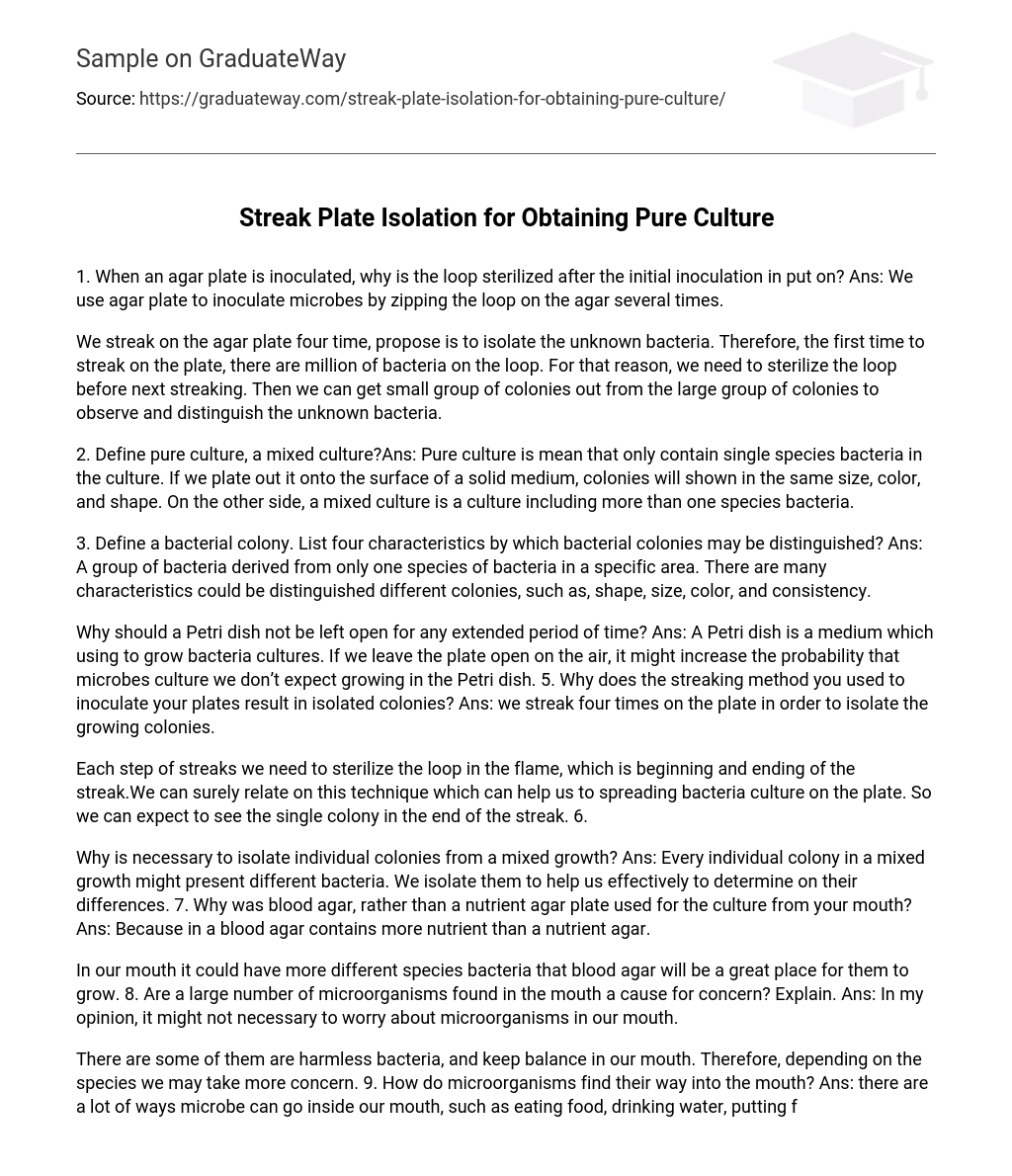When an agar plate is inoculated, the loop is sterilized after the initial inoculation to isolate the unknown bacteria. The loop is then streaked multiple times on the agar plate to introduce microbes. During the first streaking, there are millions of bacteria on the loop. Therefore, sterilizing the loop before subsequent streaking is necessary to obtain only a small group of colonies from the large group, enabling observation and differentiation of the unknown bacteria.
A pure culture contains only one species of bacteria. When plated on a solid medium, colonies originating from a pure culture display uniform size, color, and shape. In contrast, a mixed culture consists of more than one bacterial species.
A bacterial colony represents a cluster of bacteria from a single species found in a specific area. Distinguishing characteristics such as shape, size, color, and consistency can be used to differentiate bacterial colonies.
Leaving a Petri dish open for an extended period of time can increase the chances of unexpected microbial cultures developing in it.
The streaking method, which involves sterilizing the loop before and after each streak, helps spread the bacteria culture on plates and promotes individual colony formation at each streak’s end.
Separating individual colonies from mixed growth is necessary because every separate colony within mixed growth may contain different bacteria, and isolating them allows for accurate determination of their differences.
Blood agar was chosen instead of a nutrient agar plate for culturing from your mouth because blood agar provides more nutrients compared to a nutrient agar plate.





